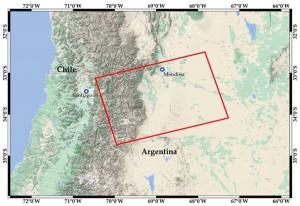
Dragon 5 unleashed: charting new frontiers in earth science
GA, UNITED STATES, December 9, 2024 /EINPresswire.com/ -- The journal Geo-Spatial Information Science will soon release a special issue showcasing the mid-term achievements of the China-Europe Earth Observation project, “Dragon 5.” Launched in July 2020, the initiative has made significant strides in Earth sciences, fostering cross-border collaboration and advancing the use of satellite data. Led by the European Space Agency (ESA) and China’s Ministry of Science and Technology (MOST), the project unites researchers from Europe and China to harness Earth observation data from ESA’s Copernicus Sentinel missions and Chinese satellites for critical applications in land, ocean, and atmospheric studies.
Spanning 55 projects and involving 736 scientists, Dragon 5 has facilitated access to 54 different satellite data types. The special issue, featuring 24 papers, highlights key progress in seven areas of remote sensing research: solid Earth, atmosphere, calibration and validation, cryosphere and hydrology, ecosystems, coastal and marine environments, and sustainable agriculture. This collaborative effort underscores the growing impact of international partnerships in driving innovation and advancing Earth observation technology.
In the Editor's Note, it is highlighted: "The Dragon 5 Cooperation project serves as a model for China-Europe Earth Observation collaboration. It not only demonstrates the latest applications of SAR technology in Earth observation but also explores its future potential through interdisciplinary research and cooperation. The publication of this special issue aims to highlight the research outcomes of the Dragon 5 project and inspire global researchers to deepen their collaboration and innovation in Earth sciences."
Included in the special issue:
1. Title: SAR sensing of the atmosphere: stack-based processing for tropospheric and ionospheric phase retrieval
This study (DOI: 10.1080/10095020.2024.2330556) proposed a novel approach for estimating tropospheric and ionospheric phase screens using SAR image stacks, effectively mitigating ionospheric noise and recovering precise phase information. The method was applied to SAR data from South Africa, Sweden, Chile, and the border areas of Argentina, demonstrating its significant effectiveness in reducing ionospheric disturbances. The findings highlighted the potential of SAR-based methods in advancing atmospheric understanding, with implications for weather prediction, geophysics, and environmental management.
2. Title: Displacements of Fushun west opencast coal mine revealed by multi-temporal InSAR technology
This research (DOI: 10.1080/10095020.2023.2239285) applied the Multi-Temporal InSAR technology and cross-wavelet analysis to analyze displacements in the Fushun West opencast coal mine. The results of this paper comprehensively consider the topography, geological conditions, displacement distribution, and temporal evolution, which is of great significance for geological disaster prevention in the investigated mining area.
3. Title: Advances on the investigation of landslides by space-borne synthetic aperture radar interferometry
This study (DOI: 10.1080/10095020.2023.2266224) summarizes the advances of the DRAGON-5 project regarding the investigation of landslides in different areas of study and contexts by space-borne synthetic aperture radar interferometry. The main contents include a procedure for correcting phase-unwrapping errors and tropospheric delays in SAR interferograms, a cross-platform SAR offset tracking method, and the application of polarimetric SAR interferometry to monitor active landslides.
4. Title: Using machine learning and satellite data from multiple sources to analyze mining, water management, and preservation of cultural heritage
This research (DOI: 10.1080/10095020.2023.2234008) evaluated multi-source Earth Observation data and machine learning techniques applied in different regions and contexts. It proposed a novel approach for extracting mining subsidence by combining an improved U-Net model and DInSAR technology, a Sentinel-1 time series data analysis using the SBAS processing method. Furthermore, it investigated how satellite data can support the protection of heritage sites and the automated monitoring of landslides in mountainous areas.
5. Title: A review of the BuFeng-1 GNSS-R mission: calibration and validation results of sea surface and land surface
This study (DOI: 10.1080/10095020.2024.2330547) summarizes the results of Bufeng-1 (BF-1) A/B data processing, calibration workflow, and validation of the calibrated sea surface winds, land surface soil moisture, and sea surface height measurements. The accuracy and reliability of the BF-1 data are verified, which shows a broad application prospect in environmental monitoring and climate research.
Original Source URL
https://www.tandfonline.com/journals/tgsi20
Lucy Wang
BioDesign Research
email us here
Distribution channels: Aviation & Aerospace Industry, Science
Legal Disclaimer:
EIN Presswire provides this news content "as is" without warranty of any kind. We do not accept any responsibility or liability for the accuracy, content, images, videos, licenses, completeness, legality, or reliability of the information contained in this article. If you have any complaints or copyright issues related to this article, kindly contact the author above.
Submit your press release




